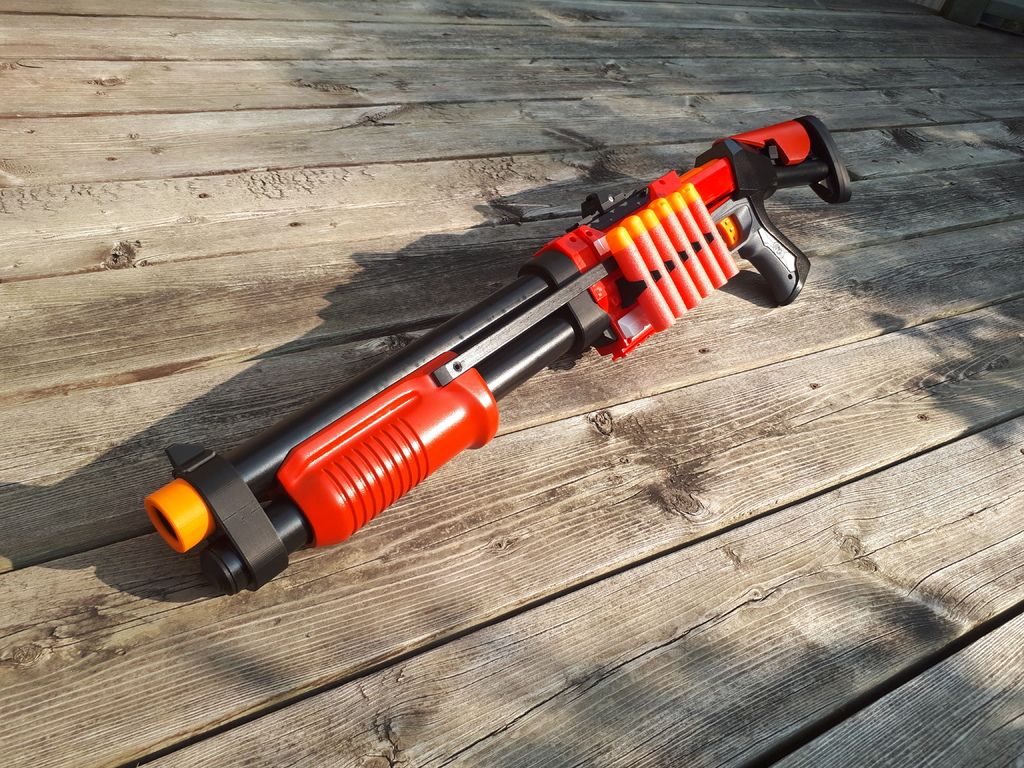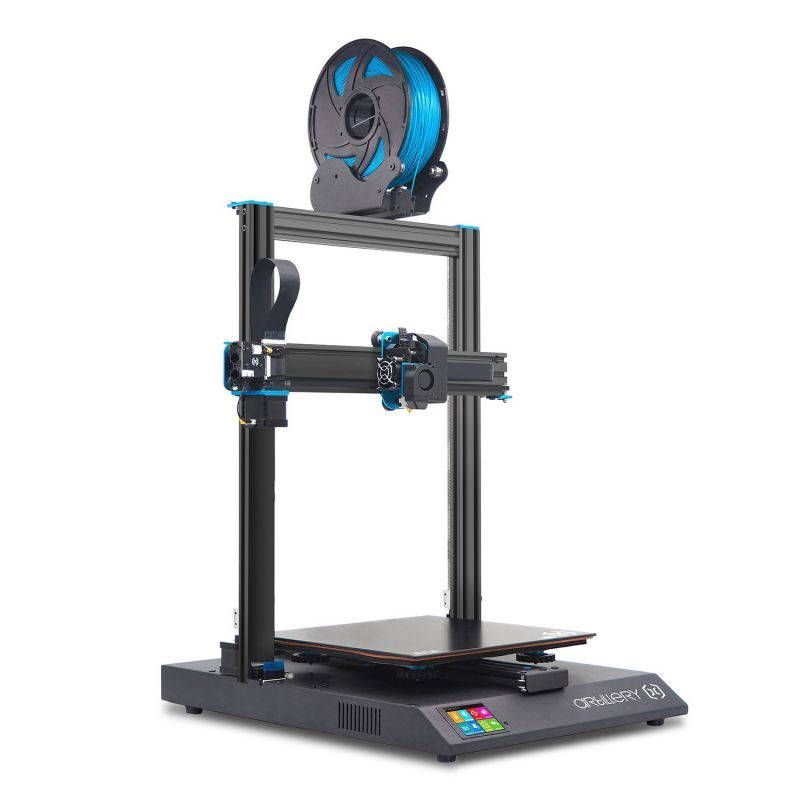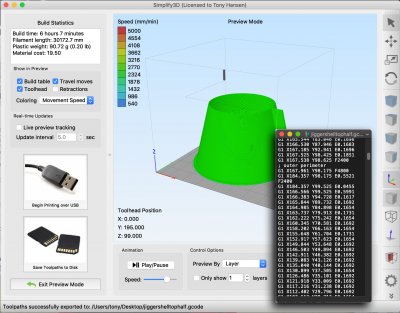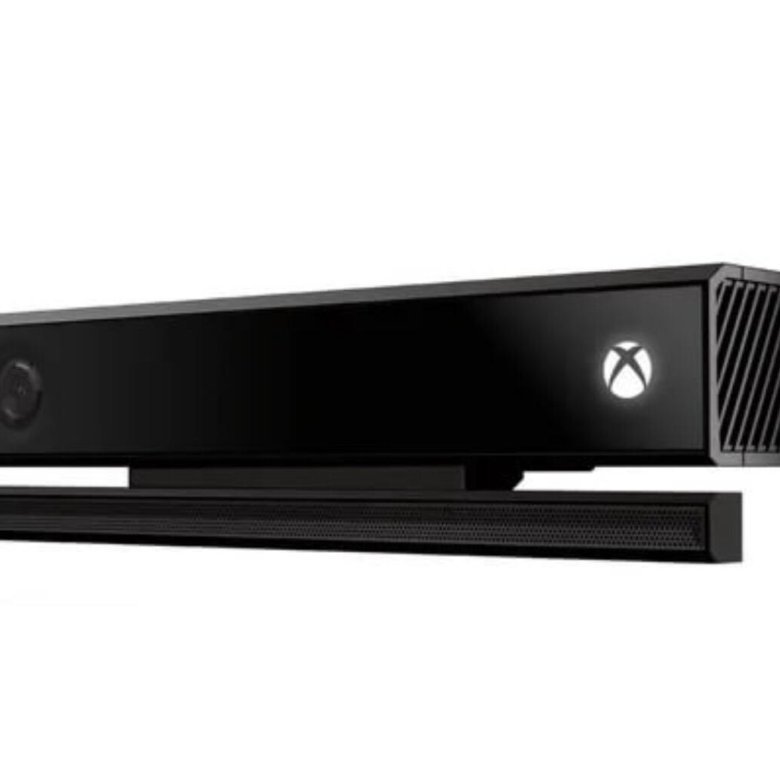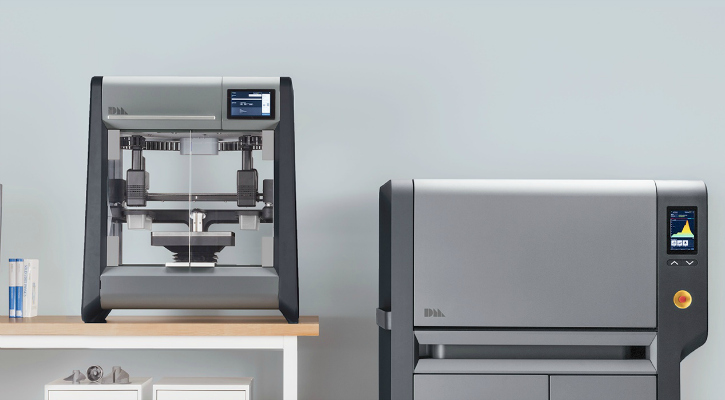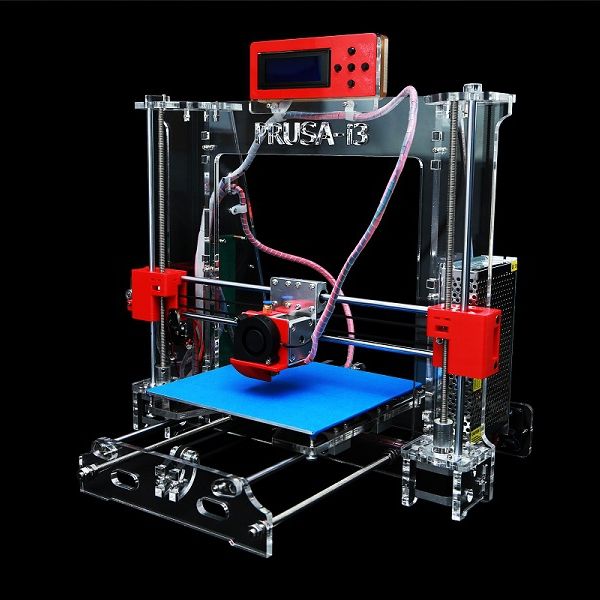How much is 3d printer ink
Best 3D Printer Ink: 3D Printers Type, Materials and Price
ADVERTISEMENT
Table of Contents
3D printing is an additive manufacturing process where each layer combines to the next layer for creating the final part. However, there are different 3D printing processes available for users with varying 3D printer “ink” choices.
As well as the cost of these materials varies widely. Some are affordable and others are highly expensive. When talking about the 3D printing processes, one may come up with different versions of it.
This is because there has been a huge development since the first process came into existence. Many patents have been accepted and the industry has evolved to bring a lot of great alternatives for users, in terms of functionalities as well as material options.
Here is an article listing some of the most common 3D printing processes and the different 3D printer materials used for these technologies.
Types of 3D Printer Materials for Varying 3D Printers
Among all the different processes, let us concentrate on the most basic and common ones. 3D printing processes differ in terms of the technology used to combine different layers together to form an object.
ADVERTISEMENT
Fused Deposition Material
Fused Deposition Modeling, abbreviated as FDM is the most common of all among consumers. These are the cheapest, hence, easily accessible to masses.
These printers are available at different price ranges, starting from as low as $150. Sometimes, FDM machines are also referred to as Fused Filament Fabrication (FFF).
These printers work with filament spools. The filament spool is loaded and fed through the nozzle to reach the printer’s bed after being melted inside the extruder. To do so, the nozzle is heated to a temperature just above the melting point of the filament, the 3D printer material.
This molten filament is deposited on the printer’s bed, one layer at a time. Once the layer sets, another layer is deposited above the first one. These layers combine and the process continues until the object is completely printed.
FDM Material
FDM 3D printers can print with many material choices. And, the new ones are developed every now and then. Here is a list of filaments available for FDM printers.
PLA
This is the cheapest filament of all. PLA is derived from cornstarch and is biodegradable. The material is very easy to tame and can be worked out without a heated bed requirement.
The material is available in various colors. However, being susceptible to heat, PLA isn’t as durable as other FDM filaments such as ABS.
But, it does have many other qualities that make it equally competitive as any other filaments. It contracts less, hence, is simple to print with.
ADVERTISEMENT
ABS
ABS is a bit expensive than PLA, however, still affordable for professional applications. The material is very popular among consumers and provides excellent results.
The material is very popular among consumers and provides excellent results.
It is durable than PLA as well. Moreover, the material is strong and lightweight at the same time. This is also available in a huge range of colors.
However, this does have a drawback. ABS emits harmful fumes when heated and must be used in a closed design 3D printer. Or, there must be enough ventilation to null the harmful effects of these gases.
Nylon
Unlike many other filaments that are rigid, Nylon has a touch of flexibility alongside a commendable strength which makes this material a premium choice for users.
The material is being used for specific as well as artistic applications. Either its engineering or art, nylon can be useful in many ways.
However, one must smoothen the surface of prints created with nylon as they have roughness after being printed. You can expect the highest layer bonding in nylon as compared to the other FDM 3D printer materials.
PET
You may have touched PET but aren’t aware of it. The material mostly used for printing water bottles. PET is often regarded as an alternative to ABS.
However, PET does not emit fumes as ABS and can be worked without much hassle. The material results in stronger and flexible parts.
As PLA, PET also can be printed with a heated bed. It provides glossy touch to the printed parts. Above all, the material is food safe.
ADVERTISEMENT
PEEK
If you are looking to create high-resistant parts, you are in the right place. PEEK can withstand high stress, temperature, as well as chemicals.
Not just that, the objects printed with this material can also be exposed to harmful radiations such as X-rays and it would have no adverse effect on the parts.
It does create robust parts, however, it can be easily fabricated at the same time. However, not every 3D printer can extrude the material. It needs up to 400°C of temperature to melt. And, is usually used with professional 3D printers.
And, is usually used with professional 3D printers.
PVA
PVA isn’t used for printing objects but is helpful in creating soluble supports. The reason it is being so popular as a support structure material is that it dissolves in water.
This means, that users do not require any special chemical to remove the supports from the final part. PVA can be dissolved in tap water.
HIPS
HIPS is usually used for support structure like PVA. However, it does have other applications too. The material dissolves in the chemical Limonene.
HIPS is extremely durable and makes as a great option for applications requiring high impact resistance. HIPS, like ABS, emit vapors when printed. Hence, one must take the necessary precautions when printing this material at home.
ADVERTISEMENT
ULTEM
The material has similar properties to that of PEEK. And, must be used with professional 3D printers. It is used for applications that seek high-performance.
The parts are highly resistant to temperature, stress as well as chemicals. And, the material is easy to fabricate. It does require high temperatures to extrude.
Hence, isn’t safe to work at home. Because of its high performance, and robustness, the material is utilized for specific applications within industries like aerospace, medical, automotive, and many others.
PETG
This material is from the PET family. PET is combined with glycol to create PETG, hence the name. This is done to realize a variety of desirable effects, for example, properties like high transparency.
Additionally, the material can be melted at a lower temperature and can be printed at a higher flow speed. This helps in accomplishing the prints at a higher rate.
There are other qualities too. The material is resistant to changing weather. Hence, can be utilized for outdoor applications. PETG is also food-safe 3D printing material like PLA and PET.
Composites
These filaments aren’t just made of a single material. However, they are a combination of more than one material to provide 3D printed parts with varying characteristics.
However, they are a combination of more than one material to provide 3D printed parts with varying characteristics.
PLA is the major filament used with different materials to create composites. For example, it is combined with wood or metal to showcase the respective properties of the other materials.
ADVERTISEMENT
Conductive:
Conductive material was founded much later after the development of 3D printing. As the name suggests, the material exhibit conductive properties and is widely used for interesting applications.
These are used for printing touch sensors in gaming pads. The material is also useful in providing desired results when used for printing conductive traces in wearable electronic devices.
The material is usually created with PLA or ABS. And, as the respective properties of these two filaments go, the conductive ABS is durable than its PLA variant, however, it does encompass the fume issues when melted.
The average cost of PLA or ABS filament is $25, talking about the standard ones. The specialty filaments can range up to four times of this cost.
The specialty filaments can range up to four times of this cost.
Selective Laser Sintering (SLS)
SLS works on the powder bed fusion technology sintering different layers of polymer powder to create the final part. To start the process, a container of polymer powder is subjected to a temperature just below the melting point of the polymer.
Using a recoating blade, a layer of the powdered 3D filament is deposited onto a build platform. To sinter the powdered particles together, a laser beam is utilized.
After the layer is formed when heating the desired cross-section of the layer, the build platform is moved down equals to the thickness of one layer.
Another layer of powdered polymer is deposited on the printed layer and the process continues until the part is completely printed.
The interesting part is that the un-sintered powder acts as the support structure. Hence, the parts printed with SLS do not need one.
ADVERTISEMENT
SLS Material
Most of the filaments used for FDM 3D printers work with SLS 3D printers as well. For example, PLA, Nylon, PEEK, and ULTEM. Apart from this, there is one more material that is used in SLS 3D printers.
For example, PLA, Nylon, PEEK, and ULTEM. Apart from this, there is one more material that is used in SLS 3D printers.
Alumide
Alumide is from the family of nylon. It is formed when nylon is combined with aluminum particles. Hence, the material exhibits similar properties to that of nylon. It is durable.
However, there are few differences too. Unlike nylon, aluminide results in the shiny, and porous surface finish. Moreover, the parts created with this material showcases excellent size accuracy. These are tough and can be used for long term applications.
Nylon 12 is the most used SLS Material and costs around $50 – $60 per kg. The cost of other advanced materials would be much higher than this.
Stereolithography (SLA)
This was the first 3D printing process developed by Chuck Hull in 1986. The SLA 3D printers use liquid photosensitive materials that are exposed to the laser beam through the galvanometers positioned on the X-axis as well as the Y-axis.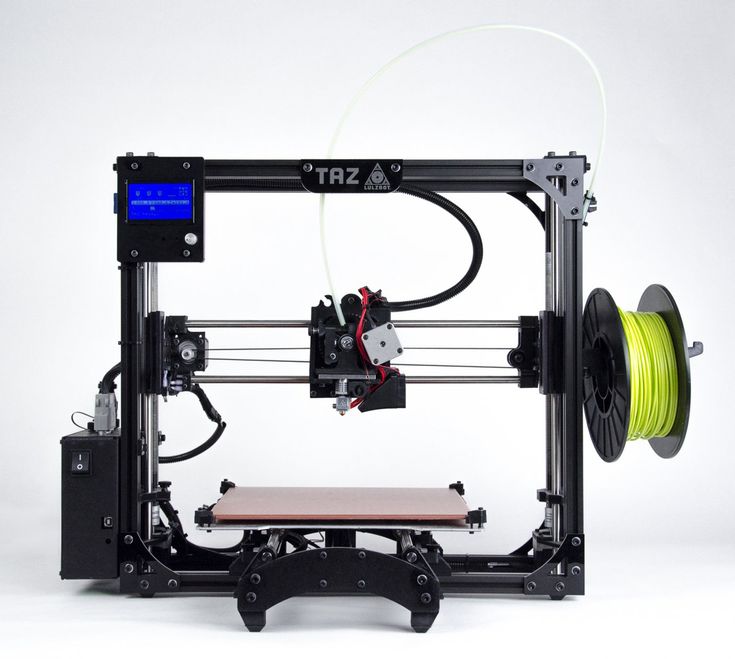
This helps in selectively curing the cross-section of the liquid resin, which further solidifies the layer in the process.
SLA Material
As mentioned before, the SLA 3D printers work on liquid resins. SLA resins were developed to simulate or copy the various properties found in the existing 3D printer materials listed above.
For example, you can use the SLA thermoplastic similar to PLA if you wish to create a biodegradable part. You can even use SLA plastics resembling the properties of ABS as well as HIPS.
Resins can be used for creating highly detailed parts utilized as functional models. The major benefit of the material comes into the picture when printing a larger model.
This can be done in relatively less time. There are other advantages too. The SLA resins are speedier and accurate. However, these are costs that most of the FDM filaments.
Standard resins cost approximately $50 per liter. However, the most expensive ones can even go up to $500 per liter.
ADVERTISEMENT
Direct Metal Laser Sintering
Direct Metal Laser Sintering, abbreviated as DMLS is a similar fashion to SLS. The major difference that sets the two technologies apart is that DMLS is used specifically for printing metal parts.
Instead of melting the powder as it is with SLS, it heats the material so that the powder particles fuse together, that too on a molecular level. DMLS produces parts from metal alloys. Like SLS, DMLS also does not require a support structure.
DMLS Material
Here are a few of the most common materials used with DMLS 3D Printers.
Inconel
This 3D printer material is a superalloy that is created as a composition of nickel and chrome. It is highly resistant to stress and temperature and can withstand extreme conditions as well.
Plus, it can bear huge pressure without any hassle. The material is used for high-performance tasks such as airplane black boxes. It is even used for printing components of rocket engines.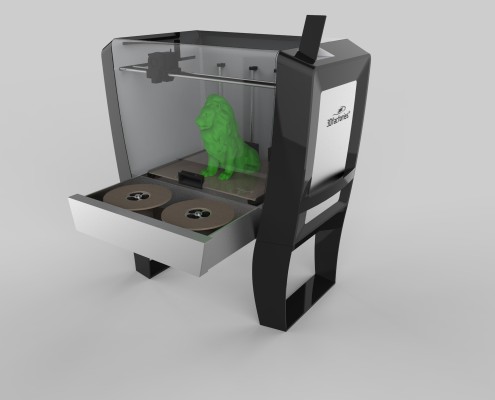 These have a huge demand in chemical industries as well.
These have a huge demand in chemical industries as well.
Cobalt-Chromium
This again is referred to as the “superalloy”. Because of its strength and resistance to heat and pressure, the material is utilized for high-performance applications.
Among the different applications, it is majorly used for medical fields, designing parts for the aerospace industry and others. Moreover, the material is also resistant to corrosion.
The metal powder prices can start from $300 per kg and can go much higher than that depending on your choice.
The Conclusion
There are many other 3D printing processes and applications. And, the number is increasing at a fast pace. With an increase in demand from different industries, the choice of materials is also surging.
With time, manufacturers are coming up with their proprietary filaments and materials that are unique and offer distinguished characteristics. Even the same material from different brands could showcase different results.
With that said, it is important to understand how to choose a material based on its properties and price. The selection of 3D printer materials can make or break the entire project. It is very crucial to have depth knowledge of materials that fit your application.
Do 3D Printers Only Print Plastic? What Do 3D Printers Use for Ink? – 3D Printerly
3D printing is versatile, but people wonder whether 3D printers only print plastic. This article will look into what kind of materials 3D printers can use.
Consumer 3D printers mainly use plastic like PLA, ABS or PETG which are known as thermoplastics since they soften and harden depending on the temperature. There are many other materials you can 3D print with different 3D printing technologies like SLS or DMLS for metals. You can even 3D print concrete and wax.
There’s some more useful information that I’ve put in this article about the materials that are used in 3D printing, so keep reading for more.
If you have ever wondered about what 3D printers use for ink, here’s the simple answer to that. 3D printers use three basic types of materials for ink which are namely;
- Thermoplastics (filament)
- Resin
- Powders
These materials make use of different types of 3D printers to print, and we are going to take a look at each of these materials as we proceed.
Thermoplastics (Filament)
Thermoplastics are a type of polymer that becomes pliable or moldable when heated to a particular temperature and hardens when cooled.
When it comes to 3D printing, filaments or thermoplastics are what 3D printers use for “ink” or material to create 3D objects. It’s used with a technology called Fused Deposition Modeling or FDM 3D printing.
It’s probably the simplest type of 3D printing out there since it doesn’t require a complex process, rather just a heating of filament.
The most popular filament that most people use is PLA or Polylactic Acid. The next few most popular filaments are ABS, PETG, TPU & Nylon.
The next few most popular filaments are ABS, PETG, TPU & Nylon.
You can get all sorts of filament types as well as different hybrids and colors, so there really is a wide range of thermoplastics you can 3D print with.
An example would be this SainSmart Black ePA-CF Carbon Fiber Filled Nylon Filament from Amazon.
Some filaments are harder to print than others, and have very different properties which you can choose according to your project.
3D printing with thermoplastic filaments involves the material being fed through a tube mechanically with an extruder, which then feeds into a heating chamber called the hotend.
The hotend is heated to a temperature at which the filament softens and can be extruded through a small hole in a nozzle, usually 0.4mm in diameter.
Your 3D printer operates on instructions called a G-Code file that tells the 3D printer exactly what temperature to be at, where to move the print head, what level the cooling fans should be at and every other instruction that makes the 3D printer do things.
G-Code files are created through processing an STL file, which you can easily download from a website like Thingiverse. The processing software is called a slicer, the most popular one for FDM printing being Cura.
Here’s a short video that shows the filament 3D printing process from start to finish.
I actually wrote a full post called the Ultimate 3D Printing Filament & Materials Guide that takes you through several types of filaments and 3D printing materials.
Resin
The next set of “ink” that 3D printers use is a material called photopolymer resin, which is a thermoset liquid that is light-sensitive and solidifies when exposed to certain UV light wavelengths (405nm).
These resins are different to epoxy resins which are usually used for hobby crafts and similar projects.
3D printing resins are used in a 3D printing technology called SLA or Stereolithography. This method provides users with a much higher level of detail and resolution due to how each layer is formed.
Common 3D printing resins are Standard resin, Rapid resin, ABS-Like resin, Flexible resin, Water Washable resin, and Tough resin.
I wrote a more in-depth post about What Types of Resin Are There For 3D Printing? Best Brands & Types, so feel free to check that out for more details.
Here is the process for how SLA 3D printers work:
- Once the 3D printer is assembled, you pour the resin into the resin vat – a container that holds your resin above the LCD screen.
- The build plate lowers into the resin vat and creates a connection with the layer of film in the resin vat
- The 3D printing file you are creating will send instructions to light up a specific image that will create the layer
- This layer of light will harden the resin
- The build plate then raises up and creates a suction pressure which peels off the created layer off the resin vat film and sticks to the build plate.

- It will continue to create each layer by exposing a light image until the 3D object is created.
Essentially, SLA 3D prints are created upside down.
SLA 3D printers can create amazing details due to being able to have resolutions of up to 0.01mm or 10 microns, but the standard resolution is usually 0.05mm or 50 microns.
FDM 3D printers usually have a standard resolution of 0.2mm, but some high-grade machines can reach 0.05mm.
Safety is important when it comes to resin because it has a toxicity when it comes into contact with skin. You should use nitrile gloves when handling resin to avoid skin contact.
Resin 3D printing does have a longer process due to the necessary post-processing. You need to wash the uncured resin off, clean up the supports that are requires to 3D print resin models, then cure the part with an external UV light to harden the 3D printed object.
Powders
A less common but growing industry in 3D printing is using powders as “ink”.
Powders used in 3D printing can be polymers or even metals that are reduced to fine particles. The qualities of the metal powder used, and the printing process determines the outcome of the print.
There are several types of powders that can be used in 3D printing such as nylon, stainless steel, aluminum, iron, titanium, cobalt chrome, among many others.
A website called Inoxia sells many types of metal powders.
There are also different techniques that can be used in 3D printing with powder such as SLS (Selective Laser Sintering), EBM (Electron Beam Melting), Binder Jetting & BPE (Bound Powder Extrusion).
The most popular is the sintering technique known as the Selective Laser Sintering (SLS).
The process of Selective Laser Sintering is done by the following:
- The powder reservoir is filled with a thermoplastic powder typically nylon (round and smooth particles)
- A powder spreader (a blade or roller) spreads out the powder to create a thin and uniform layer on the build platform
- The laser selectively heats up parts of the build area to melt the powder in a defined manner
- The build plate moves down with each layer, where the powder gets spread out again for another sintering from the laser
- This process is repeated until your part is completed
- Your final print will be encased in a nylon-powdered shell which can be removed with a brush
- You can then use a special system that uses something like high-powered air to clean the rest of it off
Here is a quick video on what the SLS process looks like.
The process is done by sintering the powder to form solid parts that are more porous than the melting point. This means that the powder particles are heated so that the surfaces weld together. One advantage of this is that it can combine materials with plastics to produce 3D prints.
You can 3D print with metal powders using technologies like DMLS, SLM & EBM.
Can 3D Printers Only Print Plastic?
Although plastic is the most common material used in 3D printing, 3D printers can print materials other than plastic.
Other materials that can be used in 3D printing include:
- Resin
- Powder (polymers & metals)
- Graphite
- Carbon Fiber
- Titanium
- Aluminum
- Silver and Gold
- Chocolate
- Stem cells
- Iron
- Wood
- Wax
- Concrete
For FDM printers, only some of these materials can be heated and softened rather than burned so that it can be pushed out of a hotend. There are many 3D printing technologies out there that expand the material capabilities of what people can create.
There are many 3D printing technologies out there that expand the material capabilities of what people can create.
The main one is the SLS 3D printers that make use of powder with the laser sintering technique to make 3D prints.
Resin 3D printers are also commonly used for home and commercial purposes. This involves using the photopolymerization process to solidify liquid resin with UV light which then passes through post-processing for a high quality finish.
3D printers can not only print plastic but can print other materials depending on the type of 3D printer in question. If you want to print any of the other listed materials above, you should get the relevant 3D printing technology to print.
Can 3D Printers Print Any Material?
Materials that can be softened and extruded through a nozzle, or powdered metals can be binded together to form an object. As long as the material can be layered or stacks on top of each other it can be 3D printed, but many objects don’t fit these characteristics. Concrete can be 3D printed since it starts off soft.
Concrete can be 3D printed since it starts off soft.
3D printed houses are made from concrete that gets mixed up and extruded through a very large nozzle, and hardens after some time.
Over time, 3D printing has introduced plenty of new materials such as concrete, wax, chocolate, and even biological matter like stem cells.
Here’s what a 3D printed house looks like.
Can You 3D Print Money?
No, you can not 3D print money due to the manufacturing process of 3D printing, as well as the embedded markings on money that make it anti-counterfeit. 3D printers mainly create plastic objects using materials like PLA or ABS, and definitely can’t 3D print using paper. It’s possible to 3D print prop metal coins.
Money is made with a lot of markings and embedded threads that a 3D printer may not be able to accurately reproduce. Even if a 3D printer can be able to produce what looks like money, the prints can not be used as money as they don’t have the unique qualities that make up a bill.
Money is printed on paper and most 3D prints are printed in plastic, or solidified resin. These materials cannot function the way a paper would and cannot be handled the same way one would be able to handle money.
Research shows that the modern currency of most countries in the world has at least 6 different technologies built into them. No 3D printer will be able to support more than one or two of these methods that are required to accurately print the bill.
Most countries especially the US are building bills that incorporate the latest high-end tech anti-counterfeiting features which will make it difficult for a 3D printer to print them. This can only be possible if the 3D printer has the required technology to print the concerned bill.
A 3D printer can only try to print a look-alike of money and does not have the right technology or materials to print money.
Many people create prop coins using a plastic material like PLA, then spray-painting it with a metallic paint.
Others mention a technique where you can create a 3D mold and use precious metal clays. You would press the clay into form then fire it into metal.
Here’s a YouTuber who created a D&D coin that has “Yes” & “No” on each end. He made a simple design in a CAD software then created a script where the 3D printed coin pauses so he could insert a washer inside to make it heavier, then finishes off the rest of the coin.
Here’s an example of a 3D Printed Bitcoin file from Thingiverse that you can download and 3D print yourself.
Cellulose based 3d printing ink
3D printing
Researchers at the Swiss Institute for Quality Control and Laboratory Research EMPA have succeeded in developing an environmentally friendly 3D printing ink based on cellulose nanocrystals. This development can be used to produce microstructures with outstanding mechanical properties that will find applications in prosthetics and other medical fields.
To create 3D microstructured materials, EMPA used an additive 3D printing technology called robocasting (Direct Ink Writing, DIW). During this process, a viscous substance, the printing material, enters through the nozzle and immediately takes the desired shape due to pseudoplasticity. Dr. Gilberto Siqueira and Dr. Tanya Zimmerman of the Wood Materials Laboratory, together with Jennifer Lewis of Harvard University and André Studart of ETH Zurich, have succeeded in developing a new sustainable 3D printing material based on cellulose nanocrystals (CNC).
Along with lignin and hemicelluloses, cellulose is the main component of wood. This biopolymer is composed of glucose chains organized into long fibrous structures. In different areas, there is a different degree of ordering of cellulose fibrils. “Sites with a more ordered structure are characterized by a pronounced crystalline form, and it is these areas that we use for our research,” explains Dr. Siqueira. After acid treatment of these areas, the researchers obtain a product in the form of cellulose nanocrystals - rod-like structures 120 nm long and 6.5 nm in diameter. It was these formations that served as the material for creating environmentally friendly "ink" for 3D printing. On their basis, it was possible to obtain "ink" with a CNC content of about 20%, while previous developments contained no more than 2.5% of this biomaterial.
“The main challenge was to achieve a viscous elastic consistency so that the consumable could easily pass through the nozzles of the 3D printer,” says Dr.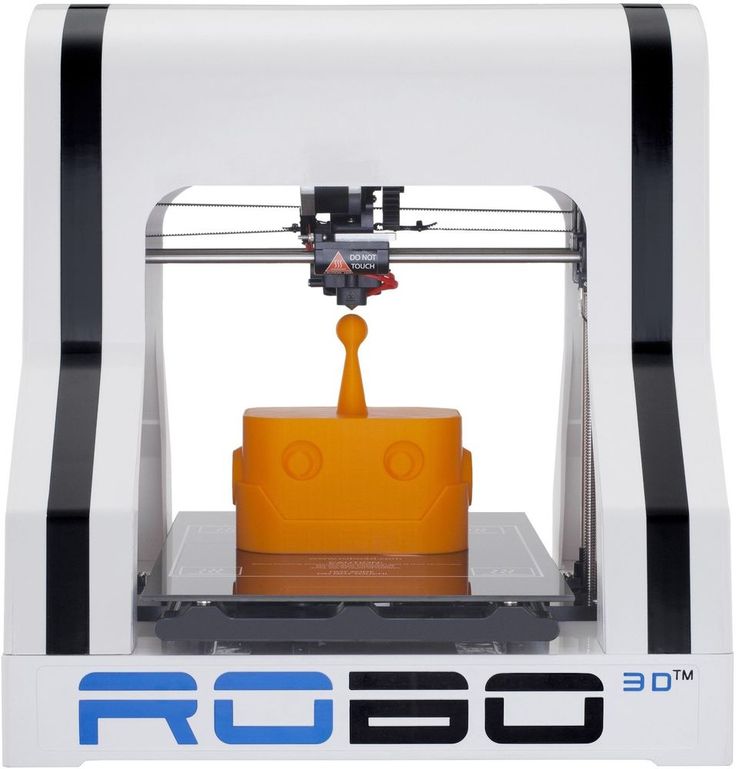 Siqueira. At the same time, the material had to be dense enough so that the model held its shape before drying or polymerization, without melting immediately after printing. The first "ink" with cellulose was water-based, which made the prototype very fragile. Therefore, the EMPA research team invented another method for manufacturing consumables, already based on a polymer. This method has a significant advantage: after printing and polymerization using UV study, cellulose nanocrystals are “glued together” by polymer blocks, which gives the composite material additional strength.
Siqueira. At the same time, the material had to be dense enough so that the model held its shape before drying or polymerization, without melting immediately after printing. The first "ink" with cellulose was water-based, which made the prototype very fragile. Therefore, the EMPA research team invented another method for manufacturing consumables, already based on a polymer. This method has a significant advantage: after printing and polymerization using UV study, cellulose nanocrystals are “glued together” by polymer blocks, which gives the composite material additional strength.
Despite resistance
Researchers admit that they had to seriously puzzle over the solution of individual problems. “Most polymers are water-repellent or hydrophobic, while cellulose, being hydrophilic, attracts water. As a result, they are incompatible,” laments Dr. Siqueira. To create favorable conditions, the scientists resorted to chemical CNC surface treatment.
After the first printing attempts and X-ray analysis of the resulting microstructures, the laboratory specialists noticed that the cellulose nanocrystals were almost perfectly aligned in the direction of printing.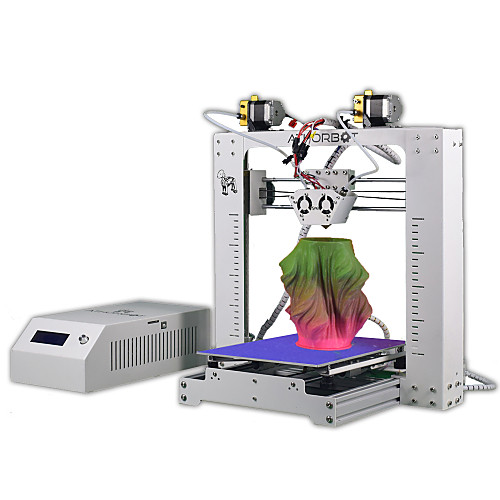 It turned out that the degree of ordering depends on the force with which the “ink” is forced through the nozzles of the 3D printer. This feature can be used if it is necessary to obtain a model that has a certain rigidity in one direction or another.
It turned out that the degree of ordering depends on the force with which the “ink” is forced through the nozzles of the 3D printer. This feature can be used if it is necessary to obtain a model that has a certain rigidity in one direction or another.
A sea of possibilities
The above advantages of CNC proved to be decisive when compared to other materials such as carbon fibres. In addition, cellulose is a renewable material and the most abundant natural polymer on Earth. It is found not only in trees, but also in other plants and even bacteria. Crystals obtained by isolation from various sources differ from each other only in size, and not in properties.
The automotive and packaging industries can also use this versatile material, which can be chemically modified through 3D printing if needed. However, according to Dr. Siqueira, the most important application of "ink" with cellulose nanocrystals is biomedicine and prosthetics in particular.
The possibilities of new "inks" are currently being studied within the walls of EMPA. At the same time, the development of new environmentally friendly consumables for various areas of 3D printing is being carried out.
At the same time, the development of new environmentally friendly consumables for various areas of 3D printing is being carried out.
You can read about other 3D printing technologies in our review.
Follow author
Follow
Don't want
2
More interesting articles
DrProg
Loading
11/08/2022
1275
9
Subscribe to the author
Subscribe
Don't want
0003
Read more
0
Subscribe to the author
Subscribe
Don't want
Ones Technology is a research and development center under the Ministry of Industry of Turkey.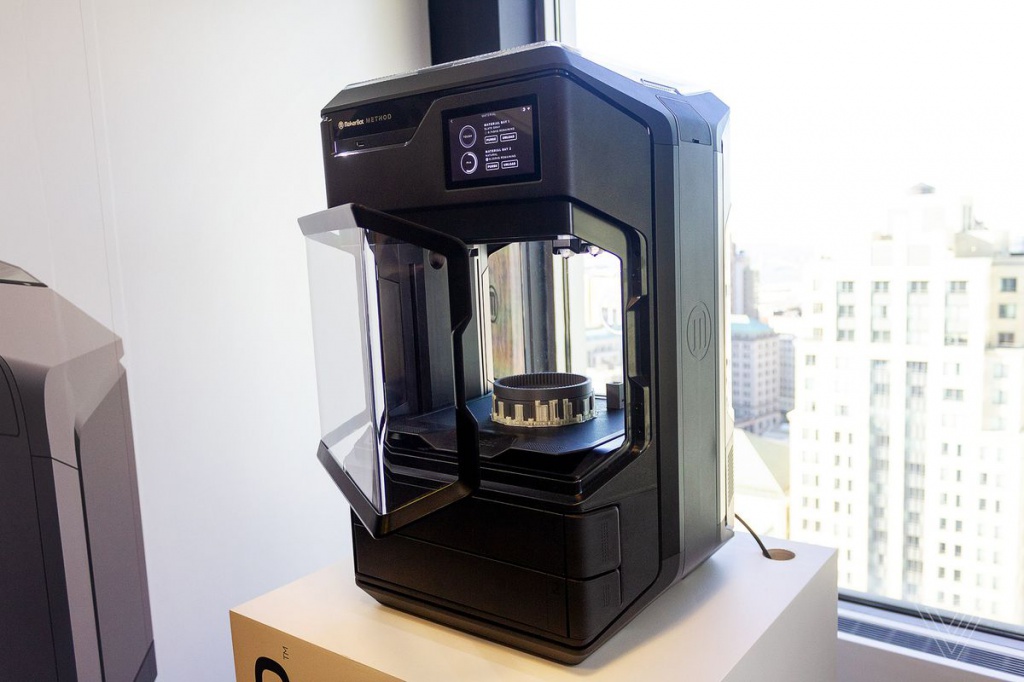 According to G...
According to G...
Read more
Leoluch
Loading
09/07/2015
356940
346
Follow the author
Subscribe
Don't want
Good afternoon, dear visitors of the portal.
Today I decided not to leave in art...
Read more
90,000 characteristics, pros and cons of each model07.04.2021
Content-
- What is a food 3D printer
- Scope 9018
Sprifs of the dietary - Popular Manufacturers
- Output
- What is a food 3D printer
A food printer is a high-tech device that is used to create culinary masterpieces. The decorative design of food products has reached a new level thanks to the use of modern technologies: high-quality and large-format printing is carried out on cakes, waffles, pancakes and even coffee.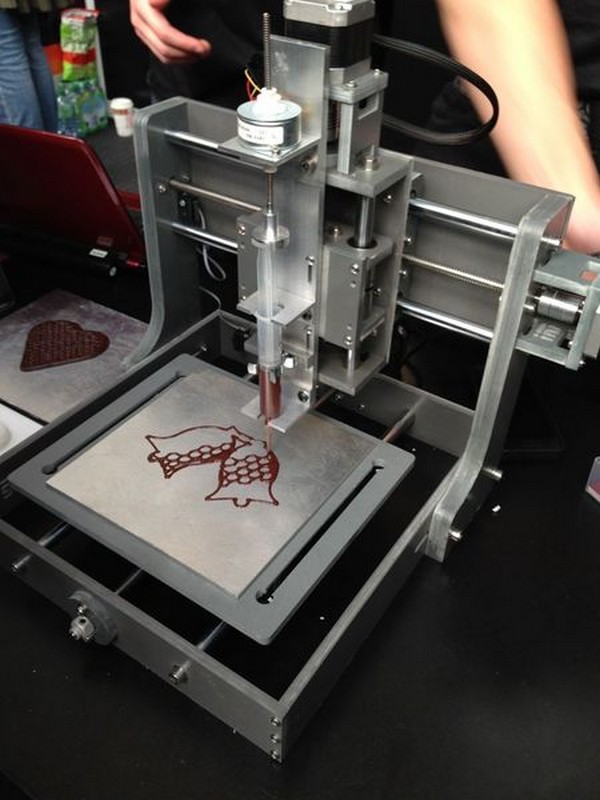 Here are the top best 3D food printers in different price categories for people who are fond of cooking.
Here are the top best 3D food printers in different price categories for people who are fond of cooking.
What is a food 3D printer
The main feature of a food 3D printer is the raw materials used: instead of printing ink, the device is filled with edible ingredients. The database stores a large number of different recipes, and in order to print a dish, you just need to select one of them and activate the printing process. The final product is layered on a work surface or on a plate: it can be baked in the oven or sent to the freezer.
Application
Futuristic 3D Printed Sugar Candy
Cookies printed with glaze
Chocolate logos of famous companies
Cream Photo Print
Buying a food 3D printer is worth the owners of coffee houses, author's bakeries and private workshops. The finished product has a unique shape and bright appearance.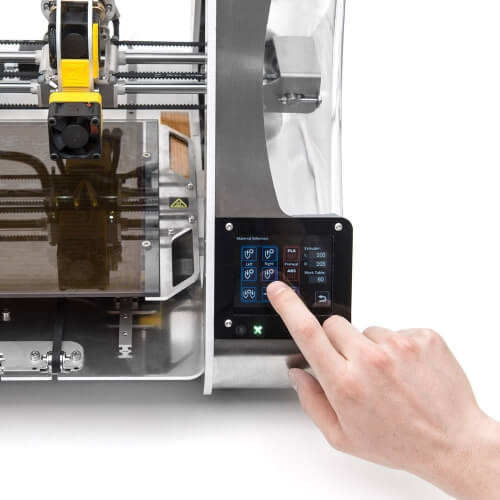 Food printers are often used to create custom wedding cakes, cartoon character cookies, Christmas gingerbread cookies, and so on. The possibilities of a baker who owns such a device are endless: the main thing is to buy quality products.
Food printers are often used to create custom wedding cakes, cartoon character cookies, Christmas gingerbread cookies, and so on. The possibilities of a baker who owns such a device are endless: the main thing is to buy quality products.
Raw materials used
The following ingredients are used as raw materials:
-
Chocolate without additives and impurities;
-
Mastic;
-
Sugar;
-
Whipped cottage cheese;
-
Vegetable and fruit pastes;
-
Fish and meat pates;
-
Flour;
-
Cheese, etc.
The confectionery pattern is applied to sugar, wafer or shock transfer paper. The first type has a sweetish aftertaste and aroma of vanilla. Due to the snow-white surface, no additional coating is required: the drawings look bright and clear. The wafer paper is made from rice flour and does not have a special taste, due to the light shade, the final drawings look less clear. Shock transfer paper is completely transparent and is suitable for transferring a design to a product (for example, a cake). For the packaging of finished products, food-grade plastic for a 3D printer is used.
Shock transfer paper is completely transparent and is suitable for transferring a design to a product (for example, a cake). For the packaging of finished products, food-grade plastic for a 3D printer is used.
Interesting! Food printers are involved in waste reduction. Unattractive fruit and confectionery leftovers are used in the preparation of printing mixes. This makes it possible to use the means of production more efficiently.
Types of 3D food printers
Cooking enthusiasts can take advantage of the following food printing devices:
-
Food 3D printers are devices that print dishes whose recipes are listed in a database. The final product is layer-by-layer superimposed on the work surface, and the raw material comes from filled cartridges;
-
Confectionery printers are used to transfer images onto specialty paper or to design small confectionery products such as candies.
 Such printers print an image on pre-prepared paper: rice, wafer or shock transfer;
Such printers print an image on pre-prepared paper: rice, wafer or shock transfer; -
Food plotters transfer the image not to paper, but directly to the finished product. For example, a plotter is used to transfer an image directly onto a cake.
There are several types of food 3D printers:
-
Extrusion - paint is applied to the surface before the dish is created. The process is controlled by the computer with the loaded image. The system has an extruder that heats the food mixture, and the distribution of raw materials depends on the print head. The raw material is loaded into a syringe placed in the head. This means that in order to combine different shades, you have to periodically stop printing and change the syringe;
-
A carousel-type food 3D printer also has an extruder, but its main feature is the method of feeding raw materials: the containers rotate around the working surface, the supply and dosage of the material used depends on the recipe specified in the program.
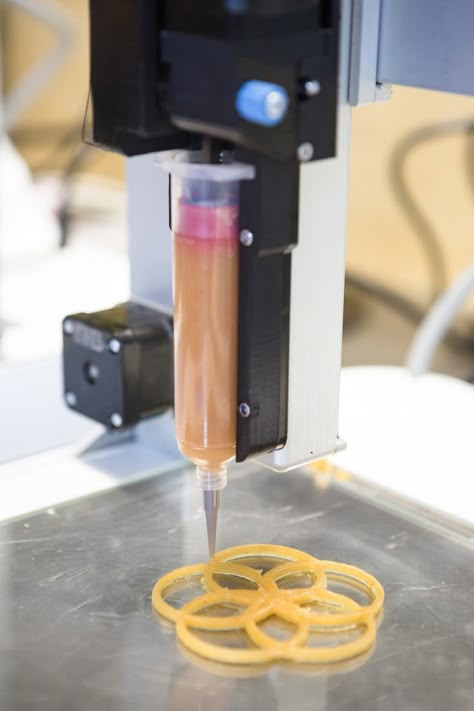 The storage can contain countless recipes, and operation does not cause difficulties even for an inexperienced user.
The storage can contain countless recipes, and operation does not cause difficulties even for an inexperienced user.
Popular brands
Eminent manufacturers offer the best value for money food 3D printer. Quality devices provide accurate printing, high speed, durability, simplicity and ease of use.
Wiibox
This company manufactures 3D printers with high build quality and high productivity. These are universal mechanisms that fill both chocolate paste and mashed potatoes. Numerous positive reviews confirm the high quality of Wiibox products.
byFlow
The Dutch company byFlow specializes in food printing technology. The pursuit of excellence helps the company open up new horizons: the technique prints products from spinach, meat emulsion and other materials. High build quality, ease of use and durability - all these characteristics are applicable to the products of this company.
Choc Edge
Choc Edge is committed to revolutionizing the world of chocolate making. Numerous experiments and focus on consumer feedback help to create more powerful devices that provide the optimal temperature for preparing and storing chocolate figures.
Numerous experiments and focus on consumer feedback help to create more powerful devices that provide the optimal temperature for preparing and storing chocolate figures.
Attention! Printing dishes helps save time on cooking: instead of culinary worries, the user can simply activate the printing process and get on with other things.
Free shipping
Add to compare
Product added to compare Go
| Manufacturer | Choc Edge |
Available on credit. To checkout, add the product to the cart and follow the instructions Go
| Manufacturer | Wiiboox |
Free Shipping
Add to compare
Product added to compare Go
| Manufacturer | Choc Edge |
Top 10 Best Food Printers: A List of the Most Current Models
Before you buy a food 3D printer, you need to familiarize yourself with the most popular devices on the world market.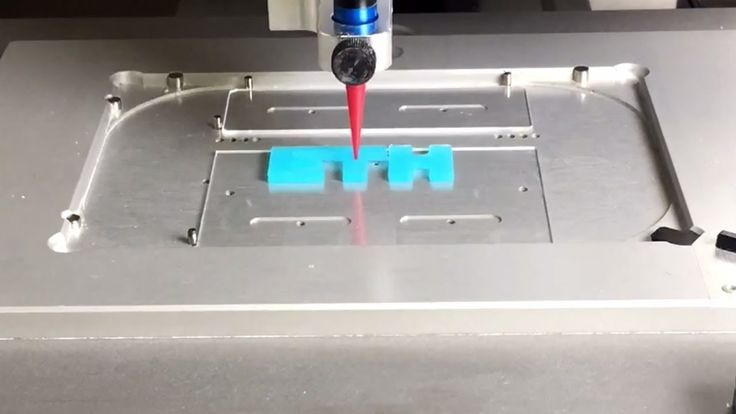 The top is based on ratings and customer reviews.
The top is based on ratings and customer reviews.
1. PancakeBot 2.0
PancakeBot 2.0 is easy to use, which means it's suitable for inexperienced users too. Users can choose from suggested designs in the software, or create their own. Used to print pancakes.
Pros:
-
Ease of operation;
-
A wide range of proposed projects;
-
High speed.
Cons:
2. Wiiboox Sweetin
Buying a food printer from Wiiboox is worth not only for confectionery lovers, but also for ordinary chefs: the device prints cakes, cookies and even mashed potatoes. The main raw materials can be meat, cheese, chocolate, jam, mashed potatoes, dough and much more. A convenient touch panel helps to set the desired mode of operation, and a stylish appearance complements the interior of any establishment.
Pros:
-
Versatility: the ability to print not only sweet dishes, but also side dishes;
-
Attractive appearance;
-
High build quality;
-
Convenient control by touch panel.

Cons:
-
High price.
3. Choc Creator V2.0 Plus
When talking about which chocolate 3D printer to buy, it is worth mentioning the numerous advantages of Choc Creator V2.0 Plus. The new model has become more perfect: the developers have worked hard to eliminate the shortcomings of the previous version. The modern model has small dimensions, thanks to which it can be used in any kitchen, and the uniform heating of the syringe ensures high-quality and uninterrupted operation. In practice, the chocolate printer has shown tremendous potential: it prints complex figures from chocolate.
Pros of :
-
Attractive appearance;
-
Uninterrupted work;
-
Durability;
-
The ability to create durable and beautiful chocolate figures.
Cons :
4.
 Food 3D printer Choc Creator V2.0 Plus with cold chamber
Food 3D printer Choc Creator V2.0 Plus with cold chamber
The new version of the Choc Creator V2.0 Plus printer is equipped with cooling chambers by popular demand. Users say that maintaining the optimal temperature in the room to preserve the integrity of chocolate figures is too problematic: therefore, the new device cools the raw materials. The price of a food 3D printer with a cooling system is slightly higher than a classic one, but the high performance of the final product justifies any costs.
Pros of :
-
Availability of a cooling system for finished products;
-
High printing precision;
-
Long service life;
-
Ease of use: You can turn the fans on and off with the side buttons.
Cons :
-
High price.
Attention! Confectionery food 3D printers are often used by artists to create edible masterpieces.
This is a unique technology that helps to unleash the creative potential of the chef.
5.byFlow Focus
Food printer from the Dutch company byFlow, which specializes in 3D printing of food. The compact high-tech device is used for the bakery industry, and the cartridges are suitable for the application of any pasty ingredients.
Pros:
Cons:
6. Chefjet Pro
Buying a ChefJet Pro food printer is a must for people who dream of making bright and stylish sweets. The device is created on the principle of inkjet printing: sugar-containing powder materials are used instead of paints. The final product is made by powder layering. The printer is suitable for combining different shades and creating gradients.
Pros:
-
The ability to create unique flavors;
-
Neat and bright printing;
-
Aesthetic appearance of the device.

Cons:
-
High price.
7. Foodini
The 3D food printer from Foodini works on the principle of a stationary printer, but instead of printing inks, layer-by-layer imposition of edible raw materials is used: dough, cream, chocolate, cream, etc. The device is versatile: the user himself can choose the material, or use ready-made cartridges with products.
Pros:
-
Practicality;
-
High build quality;
-
Attractive appearance;
-
Availability of an online platform with unique recipes.
Cons:
8. Mmuse – Chocolate 3D Printer
The closed MMuse 3D printer is suitable for chocolate printing. Chocolate beans are used as raw materials: they are heated in an extruder and fed to the work surface through the print head.
Pros:
Cons:
9. ZBOT Commercial Art Pancakes Printer F5
ZBOT Commercial Art Pancakes Printer F5 3D Printer
A food printer from Chinese manufacturers is used in the process of making pancakes of various shapes. Ease of operation allows the device to be used by children under adult supervision.
Pros:
-
Ease of operation;
-
High build quality;
-
Affordable cost.
Cons:
10. ZMorph VX
A multifunctional 3D printer capable of printing not only food, but also rubber, ABS plastic, polylactide, PVA, nylon, elastic and metal materials. The product is able to print with chocolate, butter, cookies, icing and other ingredients. In addition, there is a function of engraving and CNC milling.
Pros:
Cons:
-
High price.

Selection guide
The modern market offers a wide range of food printers. Before making a purchase, you need to carefully study the characteristics of each model and build on your own preferences. Experts have created several recommendations for choosing:
-
In case you want to create realistic images for confectionery 3D printing, pay attention to the diameter of the nozzle: the narrower it is, the more accurate the image will be;
-
It is better for people living in regions with a warm climate to purchase chocolate 3D printers with a cooling system: such devices ensure that the figurines are kept at the optimum temperature;
-
The possibility of self-refilling the cartridge is the most practical and economical way to operate the printer;
-
Print speed is an important consideration for restaurant owners. Large batches of dishes must be produced quickly, and for home use this is not a very strict selection criterion.
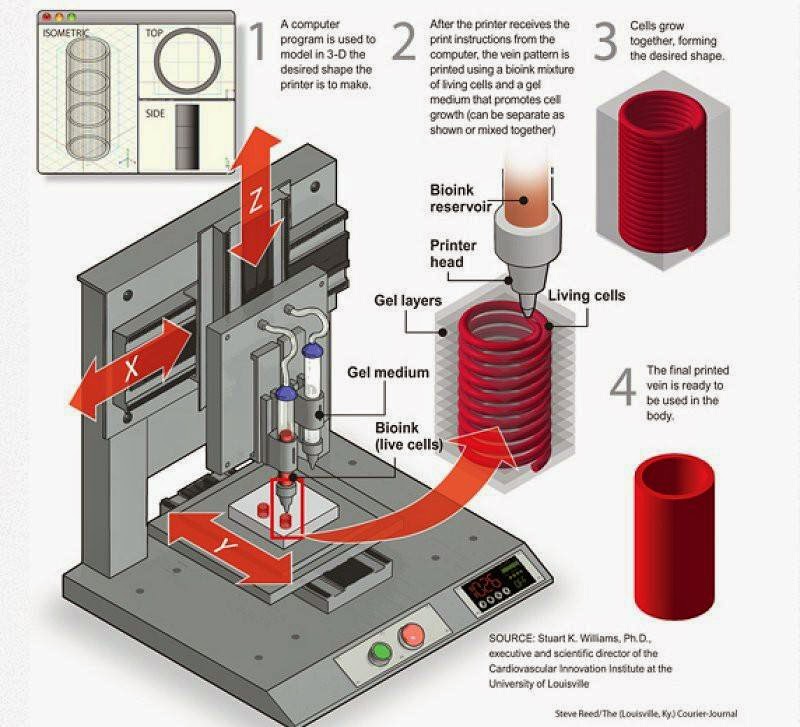
Learn more



